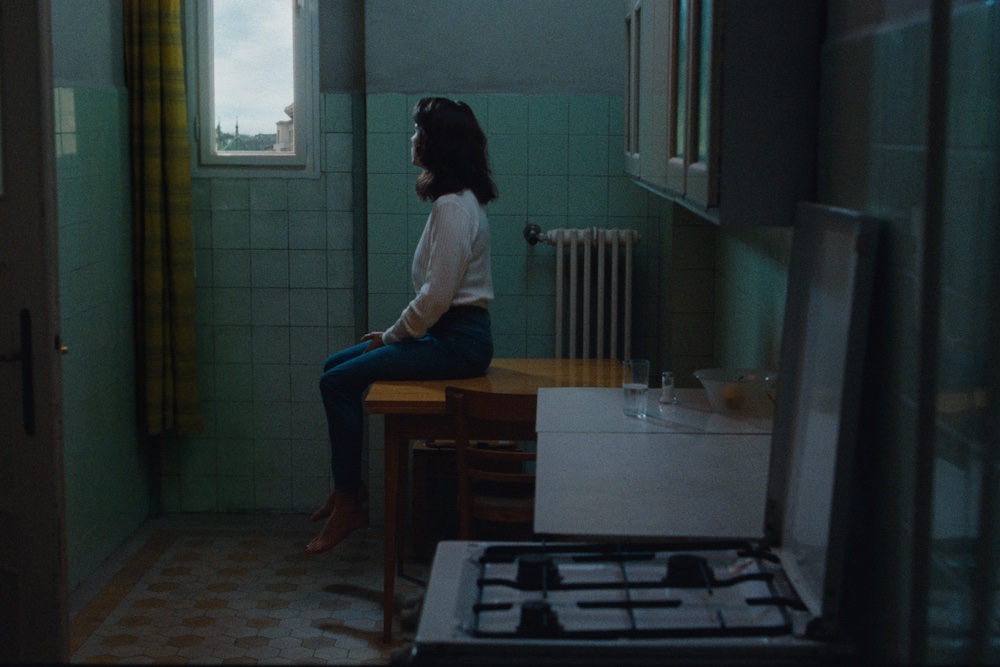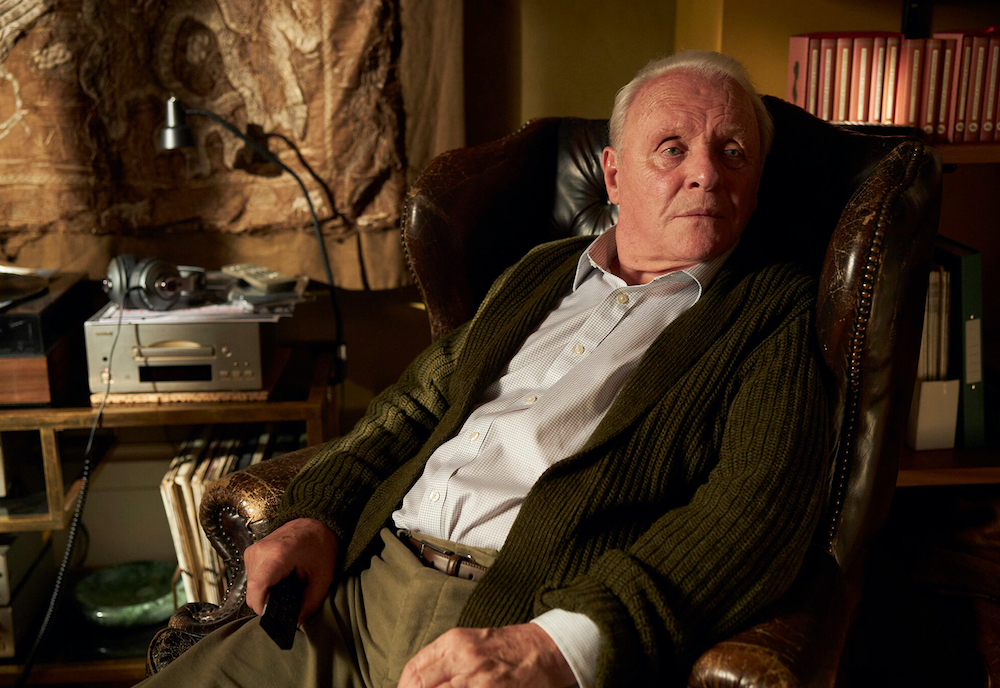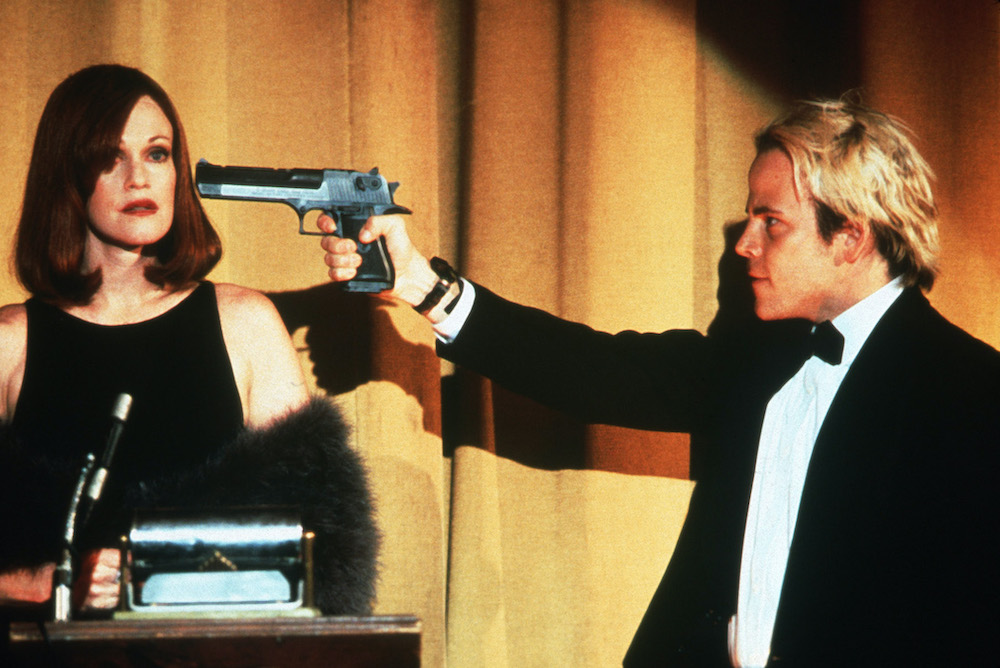
Still from Lili Horvát’s Preparations to be Together for an Unknown Period of Time, 2020. Courtesy of Greenwich Entertainment.
Lili Horvát’s Preparations to Be Together for an Unknown Period of Time was Hungary’s entry to the Oscars’ Best International Feature Film category, but unfortunately it wasn’t selected. Horvát’s second feature (named after a 1972 underground experimental theater piece) is a sophisticated puzzle of a film, filled with questions concerning the nature of desire, memory, and the human brain. Opening with a quote from Sylvia Plath’s poem “Mad Girl’s Love Song,” the film follows Márta, a highly successful Hungarian brain surgeon living in New Jersey, who returns to Budapest after an unexpected affair with János, a fellow brain surgeon, at a conference. Filled with anticipation, she waits for him at their designated meeting spot, only to be stood up. Worse yet, when she tries to confront him, he claims to have no idea who she is. Did Márta imagine the whole affair, or is János a classic cad, promising the world and delivering nothing? Horvát’s slow, measured shots cut through these possibilities as carefully as Márta cuts through a human brain. Eventually, we arrive at a conclusion that I at first worried was too pat. Reflecting on it now, though, I’m not so sure—this is a film where nothing is as it seems, least of all its characters’ motivations. —Rhian Sasseen
I have no idea what movies came out in 2020. I can tell you that it’s sheer joy to watch George Segal fall for Elliot Gould in California Split, a 1974 buddy movie that, since it happens to be about gambling, is included in the Criterion Channel’s The Gamblers series. Segal plays Bill, a moderately fun guy who works in publishing and wears a turtleneck sweater well, while Gould plays Charlie, a guy you’d bail on all your other friends to hang out with—provided you like gambling. But even if you don’t, you’ll like watching these two celebrate each other’s good luck and insist on buying the next round. The movie doesn’t glamorize addiction—Bill and Charlie’s friendship is a bright part of that darker story, and they both know it—but neither does it oversimplify or moralize. You don’t have to be a degenerate to feel impatient during the few scenes in Bill’s office, eager to get back to a game. Perhaps you’ll wax nostalgic for a time in your own life when friends were always available to join you in some variety of irresponsible behavior. The casino could be mistaken for a weird way out of nine-to-five capitalism, at least if you’re lucky—but there’s the rub. —Jane Breakell
How terrifying, the descent into dementia, and how discomposing the experience offered up by Florian Zeller’s The Father. Watching the final scenes of the film, I was desperate for a landmark by which to orient both myself and the protagonist, Anthony, played by Anthony Hopkins. If a landmark appears—and we can be sure that one does—we discover that any brief orientation can’t alleviate the horror and pain. It may even compound the confusion. We, like Anthony, lose our bearings around each corner, and just as we feel our footing is sure, the ground gives way beneath us. For ninety minutes, his reality is ours. I never thought I’d admire a performance from Hopkins as much as I admire his Mr. Stevens in Remains of the Day, but he is truly devastating here. It’s a distressing, anxious, and very convincing representation of dementia’s torments. —Robin Jones
In 1971, the People’s Video Theater sent a film crew to document a sleepaway camp for disabled teenagers. Using archival footage as well as present-day interviews with the campers, Crip Camp tells the little-known story of Camp Jened, a radical place where barriers to access were all but nonexistent. This utopian experience empowered the teens who attended, and the film, nominated for this year’s Academy Award for Best Documentary Feature, traces their trajectory from campers at Jened to leaders in the struggle for disability rights. The organizing on the part of these bunkmates-turned-activists resulted in legislation like the Americans with Disabilities Act. I love Crip Camp not only because it draws attention to a rarely discussed movement—it also shows just how formative spaces like Camp Jened can be, especially for young people. Upon returning to the site of Camp Jened (it closed in 1977), the former camper Denise Sherer Jacobson says, “I almost want to get out of my wheelchair and kiss the fucking dirt.” —Mira Braneck
I do not know how the Academy of Motion Picture Arts and Sciences decides which films are worthy of its annual awards and which are not deserving of the chance to win a small gilded humanoid. I do know that many exciting films are necessarily ignored by this inherently exclusive celebration. And thinking on such created disparity—Academy darlings versus undesirables—puts me in mind of John Waters’s Cecil B. Demented, a film that lampoons both the perpetually even-keeled filmmakers who produce too many crowd-pleasers for the Hollywood system and the overzealous indie fanatics who rebel against that system with borderline religious fervor. Marvel at one of the lesser-loved works by the master of shlock and shock! Watch a group of cinema terrorists kick off the production of their guerrilla film by nabbing the fictional A-lister Honey Whitlock at her rom-com movie premiere, setting the theater ablaze! Among this ragtag group of celluloid maniacs: Maggie Gyllenhaal as a Satan-worshipping makeup artist, Lawrence Gilliard Jr. as a set designer and diegetic DJ, Michael Shannon as a chauffeur who is inordinately interested in Mel Gibson’s genitalia, and Melanie Griffith, who manages to channel some of that Cherry 2000 B movie magic into her role as an indifferent Hollywood celebrity–turned–sympathizer for the cinematic underground. On Oscar night, instead of wondering why some films are lauded while others are shunned, I will probably just hum this film’s mantra, “Demented Forever,” and watch the shiny figurines go out. —Christopher Notarnicola
from The Paris Review https://ift.tt/3xiGtQj


Comments
Post a Comment